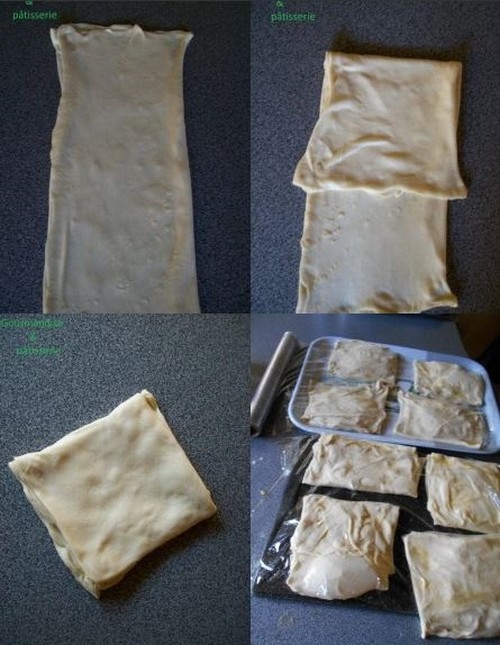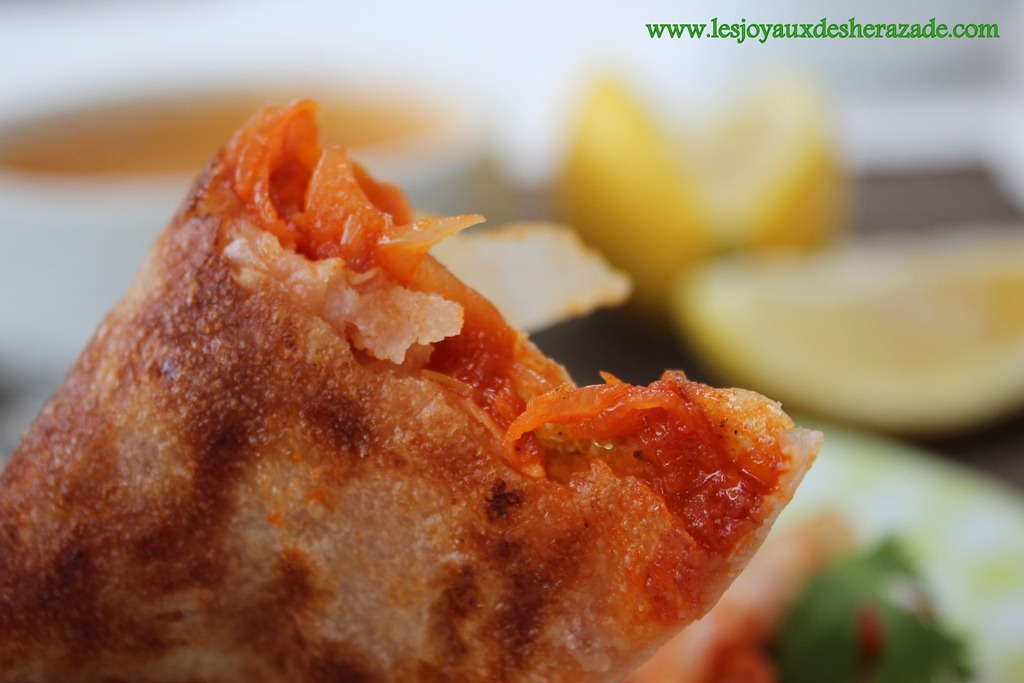Delicious "Recette Mhadjeb" – The Ultimate Guide To Mastering This Tunisian Delicacy
Have you ever heard about the incredible Tunisian dish called Mhadjeb? Well, buckle up because we're about to dive deep into this amazing cuisine that's taking the world by storm. If you're a foodie or someone who loves exploring unique flavors, this article is going to blow your mind. Recette Mhadjeb isn’t just a recipe; it’s an experience that will transport your taste buds to the bustling streets of Tunisia. So, grab your apron and let's get started!
Mhadjeb might sound unfamiliar to some, but trust me, once you try it, you’ll be hooked. This traditional Tunisian dish is a perfect blend of spices, textures, and flavors that make it stand out from the crowd. Whether you're a seasoned chef or a beginner in the kitchen, mastering the art of making Mhadjeb is totally doable. And guess what? We’re here to guide you every step of the way.
Before we jump into the nitty-gritty of the recipe, let’s take a moment to appreciate the cultural significance of Mhadjeb. This dish isn’t just about food; it’s a reflection of Tunisia’s rich history and diverse culinary influences. From the Mediterranean to North Africa, Mhadjeb brings together the best of both worlds. Now, are you ready to learn more? Let’s go!
Table of Contents
- The Fascinating History of Mhadjeb
- Key Ingredients for Recette Mhadjeb
- Step-by-Step Guide to Making Mhadjeb
- Exploring Different Variations of Mhadjeb
- Pro Tips for Perfect Mhadjeb
- Health Benefits of Mhadjeb
- Best Pairings with Mhadjeb
- Frequently Asked Questions About Mhadjeb
- Sources and References
- Wrapping It Up
The Fascinating History of Mhadjeb
Mhadjeb, like many traditional dishes, has a story that dates back centuries. Originating from the coastal regions of Tunisia, this dish was originally created by fishermen who wanted to use every part of their catch. Over time, it evolved into a beloved staple in Tunisian households, with each family adding their own twist to the recipe. It’s not just food; it’s a symbol of community and togetherness.
Interestingly, Mhadjeb’s name comes from the Arabic word “mhadjab,” which means “covered” or “wrapped.” This refers to the way the dough is folded around the filling, creating a delicious pocket of goodness. The dish has also been influenced by neighboring countries, such as Italy and Spain, which explains the use of ingredients like tomatoes and olive oil.
How Mhadjeb Became a Cultural Icon
Over the years, Mhadjeb has become more than just a meal. It’s a cultural icon that represents Tunisia’s culinary heritage. From street vendors to high-end restaurants, you can find Mhadjeb in various forms, each one more delicious than the last. It’s a dish that brings people together, whether it’s during family gatherings or festive celebrations.
Key Ingredients for Recette Mhadjeb
Now that we’ve covered the history, let’s talk about the ingredients you’ll need to make this amazing dish. The beauty of Mhadjeb lies in its simplicity and the use of fresh, high-quality ingredients. Here’s a list of what you’ll need:
- Flour – for the dough
- Water – to bind the dough
- Olive oil – for flavor and texture
- Tomatoes – fresh or canned
- Onions – finely chopped
- Garlic – minced
- Chickpeas – cooked or canned
- Spices – cumin, paprika, turmeric, and chili powder
- Fish – optional, but traditionally used
These ingredients might seem basic, but when combined, they create a symphony of flavors that’s simply irresistible. Plus, you can always add your own favorite ingredients to make it even more personalized.
Step-by-Step Guide to Making Mhadjeb
Making Mhadjeb might sound intimidating, but it’s actually quite simple. Follow these steps, and you’ll have a delicious meal ready in no time.
Preparing the Dough
Start by mixing the flour and water in a large bowl. Add a dash of olive oil to give the dough a soft texture. Knead the mixture until it becomes smooth and elastic. Cover it with a cloth and let it rest for about 30 minutes. This step is crucial because it allows the dough to relax and become easier to work with.
Cooking the Filling
In a separate pan, sauté the onions and garlic until they’re golden brown. Add the tomatoes, chickpeas, and spices, and let them simmer for about 15 minutes. If you’re using fish, add it towards the end to avoid overcooking. The result should be a rich, flavorful sauce that’s perfect for filling your Mhadjeb.
Assembling the Mhadjeb
Once the dough has rested, divide it into small balls. Roll each ball into a thin circle and place a spoonful of the filling in the center. Fold the dough over the filling and seal the edges by pressing them together. Repeat this process until you’ve used up all the dough and filling.
Cooking the Mhadjeb
Heat a non-stick pan over medium heat and lightly grease it with olive oil. Place the Mhadjeb in the pan and cook each side for about 5 minutes, or until they’re golden brown and crispy. Serve them hot with a side of yogurt or salad, and enjoy!
Exploring Different Variations of Mhadjeb
One of the best things about Mhadjeb is its versatility. While the traditional recipe is fantastic, there are plenty of variations you can try to keep things interesting. Here are a few ideas:
- Vegetarian Mhadjeb – replace the fish with extra chickpeas or lentils
- Spicy Mhadjeb – add more chili powder for an extra kick
- Cheese Mhadjeb – sprinkle some feta cheese on top of the filling for a cheesy delight
- Seafood Mhadjeb – use shrimp or mussels instead of fish for a different twist
The possibilities are endless, so don’t be afraid to experiment and find your own favorite version of Mhadjeb.
Pro Tips for Perfect Mhadjeb
Here are a few tips to help you make the best Mhadjeb possible:
- Don’t rush the dough preparation; it needs time to rest properly
- Make sure the filling is not too wet, or it will make the dough soggy
- Use a non-stick pan to prevent the Mhadjeb from sticking
- Experiment with different spices to find your perfect flavor profile
These tips might seem simple, but they can make a huge difference in the final result. Remember, practice makes perfect, so don’t be discouraged if your first attempt isn’t perfect.
Health Benefits of Mhadjeb
Not only is Mhadjeb delicious, but it’s also packed with health benefits. The chickpeas provide protein and fiber, while the tomatoes are rich in antioxidants. The spices used in the recipe have anti-inflammatory properties and can boost your immune system. Plus, using olive oil instead of butter makes it a heart-healthy choice.
Of course, moderation is key. While Mhadjeb is nutritious, it’s still important to balance it with other foods to maintain a healthy diet. But hey, who doesn’t love a dish that tastes great and is good for you?
Best Pairings with Mhadjeb
Mhadjeb pairs beautifully with a variety of sides and drinks. Here are a few suggestions:
- Fresh salad – a light and refreshing option
- Yogurt sauce – adds a creamy contrast to the crispy Mhadjeb
- Tunisian harissa – for an extra spicy kick
- Cold beer or lemonade – perfect for cooling down the heat
These pairings enhance the flavors of Mhadjeb and make the dining experience even more enjoyable. So, don’t hesitate to try them out!
Frequently Asked Questions About Mhadjeb
Here are some common questions people have about Mhadjeb:
Is Mhadjeb difficult to make?
Not at all! With a bit of practice, anyone can make delicious Mhadjeb at home.
Can I freeze Mhadjeb?
Absolutely! Just make sure to wrap them tightly in plastic wrap and store them in an airtight container. They’ll keep for up to a month in the freezer.
What’s the best way to reheat frozen Mhadjeb?
The best way is to place them in a preheated oven at 350°F for about 10 minutes. This will ensure they stay crispy and delicious.
Sources and References
For more information on Mhadjeb and Tunisian cuisine, check out these resources:
- “The Food of Tunisia” by Claudia Roden
- Tunisian culinary blogs and websites
- Cooking classes offered by Tunisian chefs
Wrapping It Up
So, there you have it – everything you need to know about recette Mhadjeb. From its fascinating history to the step-by-step guide, we’ve covered it all. Mhadjeb isn’t just a recipe; it’s a journey into the heart of Tunisian culture. So, what are you waiting for? Get into the kitchen and start cooking!
And don’t forget to share your experience with us in the comments below. We’d love to hear how your Mhadjeb turned out and any tips you might have. Happy cooking, and see you in the next article!



Detail Author:
- Name : Aliyah Mohr
- Username : murazik.tyrese
- Email : lawson76@yahoo.com
- Birthdate : 1989-03-12
- Address : 6633 Leonardo Ferry Apt. 439 West Kyleemouth, KY 56740-2114
- Phone : 1-409-419-5120
- Company : Price, Schoen and Kozey
- Job : Announcer
- Bio : Dolores sit hic dolores fugiat molestiae. Quia vel asperiores quia architecto illo blanditiis sed. Eos officia aut illo corrupti dolore enim nostrum. Non laudantium ut iste itaque.
Socials
linkedin:
- url : https://linkedin.com/in/stephen_dev
- username : stephen_dev
- bio : Non numquam ut ratione ipsa vero explicabo ea.
- followers : 1809
- following : 217
twitter:
- url : https://twitter.com/tremblay2009
- username : tremblay2009
- bio : Nulla autem atque doloremque magnam eum. Aut eos labore voluptates molestiae.
- followers : 2773
- following : 145
facebook:
- url : https://facebook.com/stephen.tremblay
- username : stephen.tremblay
- bio : Porro ut qui eos repudiandae ut. Libero at rem error minus reiciendis.
- followers : 3726
- following : 2003
tiktok:
- url : https://tiktok.com/@stephen_id
- username : stephen_id
- bio : Illum consequatur sit iste architecto vitae.
- followers : 6817
- following : 271
instagram:
- url : https://instagram.com/stephen.tremblay
- username : stephen.tremblay
- bio : Doloribus minus placeat consequuntur et. Non ut sit tenetur quos praesentium et corrupti et.
- followers : 3488
- following : 2906